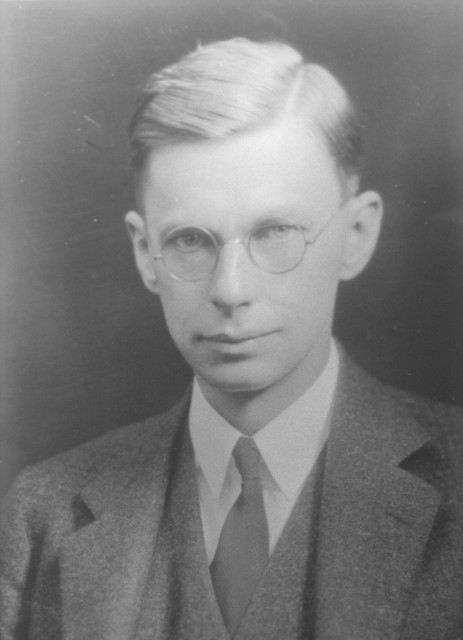James Bryant Conant
1893-1978

Conant had at least three distinguished careers, the first in organic chemistry (Harvard, 1919-1933). His research set the groundwork for the area later known as physical organic chemistry. A quantitative study of the reaction of KI with alkyl chlorides became the classic example of an SN2 reaction. He pioneered the study of "superacids" in non-aqueous solvents. Work with P. D. Bartlett (see portrait) on the mechanism of semicarbazone formation clearly distinguished between kinetic and thermodynamic control of reactions. Conant also discovered the acceleration of polymerization by pressure, measured heats of hydrogenation of organic compounds and redox potentials of quinones, used radiocarbon (14C) in a metabolic study on lactic acid, helped elaborate the structure of chlorophyll, and found copper to be the essential metal in hemocyanin, the oxygen-carrying pigment of crustaceans. All this and much more in 114 research papers and 15 years!
In 1933 Conant was appointed President of Harvard and in 20 years brought it from a college to a distinguished university. Measures he introduced as an administrator and educator established research and graduate education as comparable in importance to undergraduate teaching. After retirement Conant's third career, as statesman, included service as U.S. High Commissioner, and later, Ambassador to Germany.
Conant wrote (with A. H. Blatt) an excellent undergraduate organic chemistry text, a high school chemistry text (with N. H. Black), and more than 25 other books in science and education, including an influential study of U.S. high schools and an autobiography "My Several Lives" (1970).
Location in chemistry building: First Floor; West Wing South Wall; Sequence 3
Source: Harvard University Archives